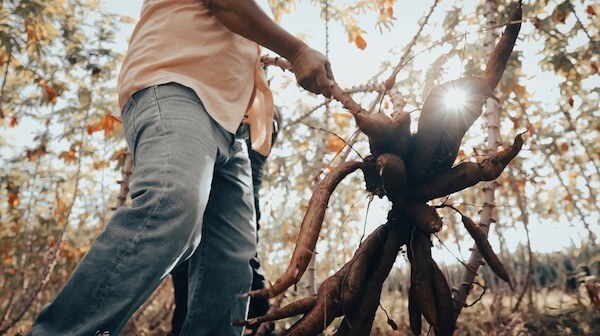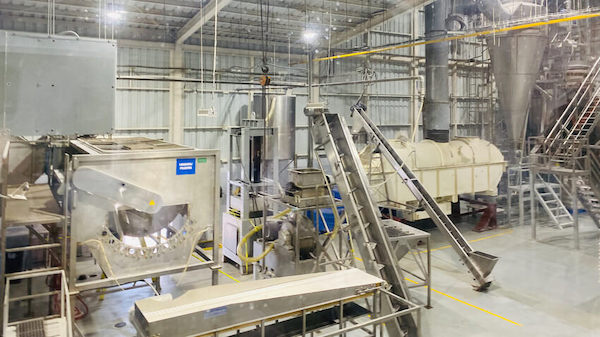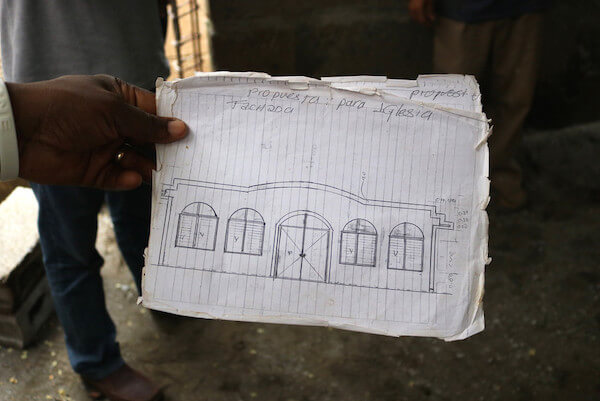In the late 1980s, professors at Northwestern University proposed a new method of economic development. The premise was simple: What if we started with what a community had, instead of what it lacked? What if we leveraged a neighborhood’s existing skills, resources, institutions, partnerships, and people to advance the greater good?
What might be possible if we centered our strategies on communities’ assets?
Historically, economic development programs relied upon outside factors and third-party actors to advance a community’s growth and flourishing. External experts came to a community with pre-baked solutions and implemented them, but Asset Based Community Development (ABCD) was different—” It sees communities as co-producers of health and well-being, rather than the recipients of services.” (cswe.org)
DePaul University researchers explained, “ABCD builds on the assets that are already found in the community and mobilizes individuals, associations, and institutions to come together to build on their assets—not concentrate on their needs. An extensive period of time is spent in identifying the assets…The key is to begin to use what is already in the community.”
Opportunity’s Efforts with Community Economic Development
In 2005, Opportunity supporter David Allman approached the Opportunity International team with an idea. He had been reading about Asset Based Community Development (also known as Community Economic Development) and was interested in testing the model in Nicaragua.
The first step of any Community Economic Development program—before any action or implementation—is listening. So the Opportunity team in Nicaragua put their ear to the ground. Soon, we began to hear repeated messages—about the things that communities did well, the resources they had at their fingertips, and the needs that limited their progress.
Farmers had fields full of yucca and cassava, but they still struggled to feed their own families. Students had big dreams for their futures, but no one in their families had ever finished high school. Neighborhoods knew they needed clean water, more robust health care, and healthy sanitation, and they were ready to invest their meager savings into these community resources.
More broadly, Nicaragua has impressive natural beauty, including two coastlines, volcanoes, lakes, and cool mountain regions. Tourism was growing—and had the potential to be an even larger part of the country’s burgeoning economy.
It’s easy to focus on the fact that Nicaragua remains one of Latin America’s least developed countries—and to highlight the political unrest in recent years that drastically slowed down the country’s progress. But despite these realities, the assets remain. And our Community Economic Development pilot that launched almost 20 years ago continues to create opportunities for individuals, families, and neighborhoods to build more resilient livelihoods and brighter futures.
Agriculture: The Yucca Processing Plant
As we’ve seen time and again, the majority of families living in poverty rely upon farming to survive. In Nicaragua, many farmers grow yucca—a starchy, potato-like vegetable that, when processed correctly, can be used as a flour or input for a huge number of processed foods. The challenge, of course, is how to process it correctly when you don’t have access to professional-grade facilities.
The communities we serve in Nicaragua knew how to grow yucca, and they knew what they needed to do to it to make it more valuable. The only thing they were missing was the infrastructure.

We acknowledged the assets that existed, listened to farmers’ needs, and then equipped them to earn a fair income for their crops through a yucca processing plant. We worked with local agricultural leaders to create a food-grade certified facility, which turns raw yucca into yucca flour or starch to sell to higher-value markets.

Seeing that this investment in existing assets was working, we expanded the processing plant and launched a field-to-market strategy that covered everything from planting and technical assistance to increased value-add in the processing for international-quality flour.
Today, the plant employs 135 people and has achieved profitability. You might have even sampled these farmers’ crops in Siete chips in your local grocery store!
Community Development: Neighbor-Led Initiatives
One of the foundational characteristics of Community Economic Development is helping communities improve their own neighborhoods. Opportunity helps communities install wells, build churches, repair roofs, and host livelihood training sessions in health and wellness—projects directed and funded largely by local families.
In the earliest days of our Community Economic Development work, the La Laguna community decided that they wanted clean water in their neighborhood. The 2,000 people in the area banded together to invest cash and manual labor to build a 2.75-kilometer hand-dug trench that connected a well to a storage tank. They laid pipelines to homes and purchased an electrical transformer for the pump. Opportunity partnered with them to achieve their goal—providing additional financial support to cover key expenses. As a result, 250 households received clean water at a cost of $0.81/cubic meter—a resource that cost $6/cubic meter prior to the project.
More recently, in a recent church-building project, leaders in the El Sol community secured 84% of the required funding for the project—and Opportunity helped make up the difference.

Now, we are helping leaders in El Comejen construct latrines and families in San Blass build a pavilion at their local cemetery. These initiatives are selected and led by the neighbors that will use them—embodying the ethos of a “hand up” not a “hand out.”
Education: The Emprendedora Technical School
Perhaps the most valuable asset any community has is human capital—the hearts, minds, and hands of the people who call a place home. Young people, in particular, are paving the way to the future and helping to break the cycle of poverty. It’s why we invest in Education Finance around the world, and it’s why we are so excited about our technical high school in Nicaragua.
In April 2022, the Emprendedora Technical School celebrated its 10-year anniversary, providing education to rural youth and training students in hospitality, agriculture, and English.
The school balances traditional high school classes with hands-on instruction and professional opportunities, preparing students for leadership in the region’s fastest-growing industries, including tourism and agriculture.
Graduate Reyner Josue Morales Fletes shared, “Thanks to all the training I received at the Emprendedora school, I was able to gain the confidence I needed to begin my professional journey.” Today, Reyner owns his own ice cream shop that generates income for 12 people.
“This is just the beginning,” he says. “I have big dreams for the future. I want to expand my business nationwide—and I want to study digital marketing so that I will have better tools to succeed in the business world.”
The Future of Community Economic Development in Nicaragua
Reyner is right—this is just the beginning. As we look to the future of Nicaragua, and of Community Economic Development, broadly speaking, we know that training, listening, and learning will be core tenets.
In April 2022, we hosted the first of two annual meetings where more than 40 leaders from 15 communities shared their experiences in project planning, execution, and lessons learned. In addition, 53 leaders from 10 communities started a training program to strengthen their interpersonal relationships skills, focused on conflict resolution, management of a community fund, and effective meetings. Again, community members are at the helm—learning to be more powerful and dynamic leaders who can advocate for and direct change in their own neighborhoods.
DePaul’s ABCD Institute describes communities as being “diverse and potent webs of gifts and assets.” We have experienced the power of these multifaceted and dynamic networks, watching as farmers become participants in international agricultural trade, community leaders transform their neighborhoods, and students chart bold paths for the future.
As we turn the calendar to a new year, we cannot wait to see what’s next.


